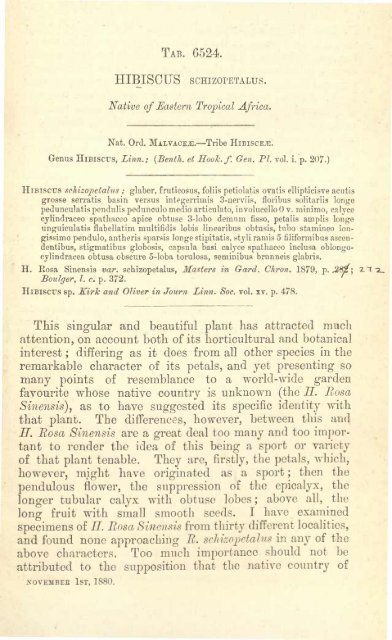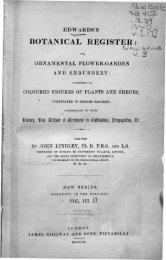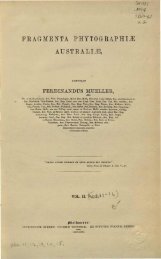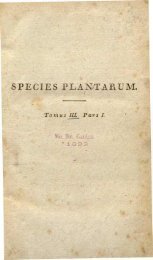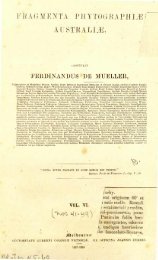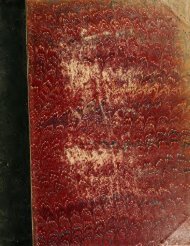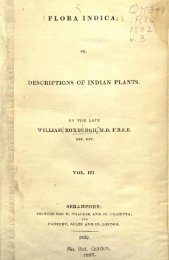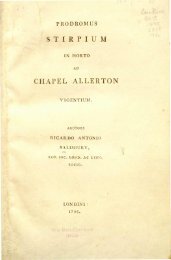Botanical Magazine 106 - 1880.pdf - hibiscus.org
Botanical Magazine 106 - 1880.pdf - hibiscus.org
Botanical Magazine 106 - 1880.pdf - hibiscus.org
Create successful ePaper yourself
Turn your PDF publications into a flip-book with our unique Google optimized e-Paper software.
TAB. 6524.<br />
HIBISCUS SCHIZOPETALUS.<br />
Native of Eastern Tropical Africa.<br />
Nat. Ord. MALVACE^:.•Tribe HIBISCEJE.<br />
Genus HIBISCUS, Linn.; {Benth. et Hook. f. Gen. PI. vol. i. p. 207.)<br />
HIBISCUS schizopetalus ; glaber, fruticosus, foliis petiolatis ovatis ellipticisve acutis<br />
grosse serratis basin versus integerrimis 3-nerviis, floribus solitariis longe<br />
pedunculatispendulis pedúnculo medio articulato, involucelloO v. minimo, calyce<br />
cylindraceo spathaceo apice obtuse 3-lobo demum fisso, petalis amplis longe<br />
unguiculatis flabellatim multifidis lobis linearibus obtusis, tubo stamineo lon-<br />
gissimo péndulo, antberis sparsis longe stipitatis, ¿tyli ramis 5 filiformibus ascen-<br />
dentibus, stigmatibus globosis, capsula basi calyce spathaceo inclusa oblongo-<br />
cylindracea obtusa obscure 5-loba torulosa, seminibus brunneis glabria.<br />
H. Rosa Sinensis var. schizopetalus, Masters in Gard. Chron. 1879, p. J¿f& ;<br />
Boulger, I. c. p. 372. '<br />
HIBISCUS sp. Kirk and Oliver in Journ Linn. Soc. vol. xv. p. 478.<br />
This singular and beautiful plant has attracted much<br />
attention, on account both of its horticultural and botanical<br />
interest ; differing as it does from all other species in the<br />
remarkable character of its petals, and yet presenting so<br />
many points of resemblance to a world-wide garden<br />
favourite whose native country is unknown (the H. Rosa<br />
Sinensis), as to have suggested its specific identity with<br />
that plant. The differences, however, between this and<br />
U. Rosa Sinensis are a great deal too many and too impor-<br />
tant to render the idea of this being a sport or variety<br />
of that plant tenable. They are, firstly, the petals, which,<br />
however, might have originated as a sport ; then the<br />
pendulous flower, the suppression of the epicalyx, the<br />
longer tubular calyx with obtuse lobes ; above all, the<br />
long fruit with small smooth seeds. I have examined<br />
specimens of H. Rosa Sinensis from thirty different localities,<br />
and found none approaching R. schizopetalus in any of the<br />
above characters. Too much importance should not be<br />
attributed to the supposition that the native country of<br />
XOVEMBEB 1ST, 1880.


